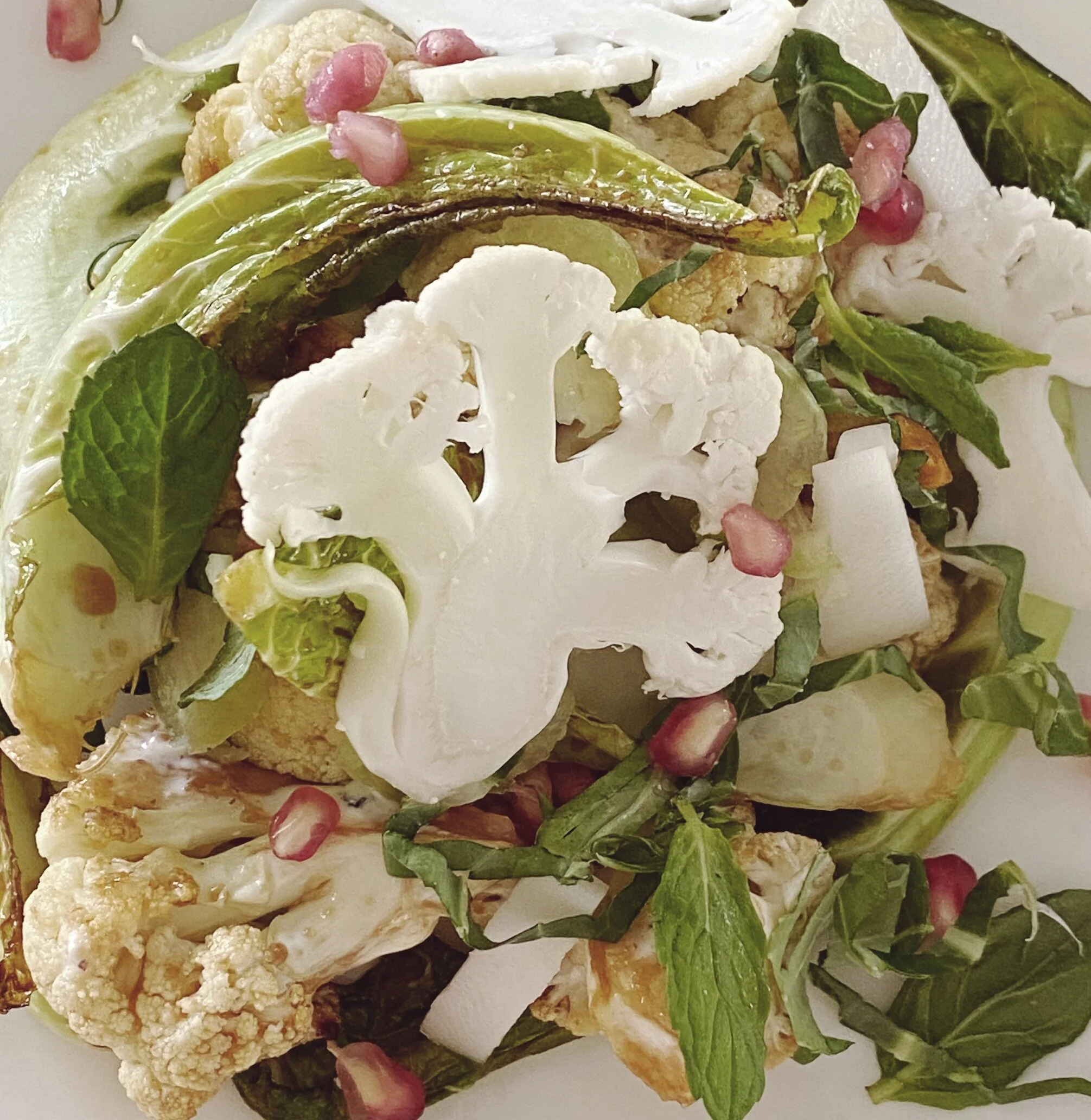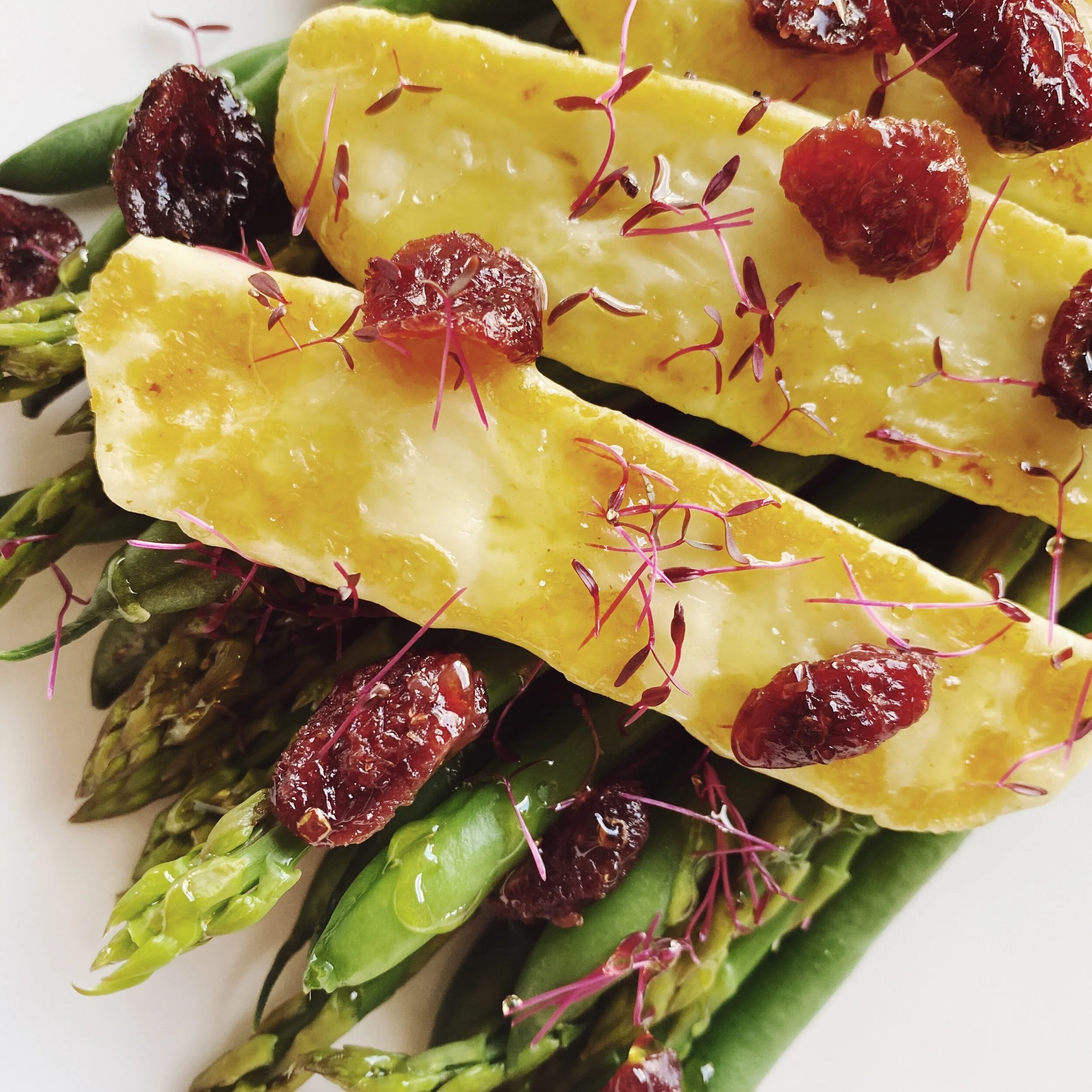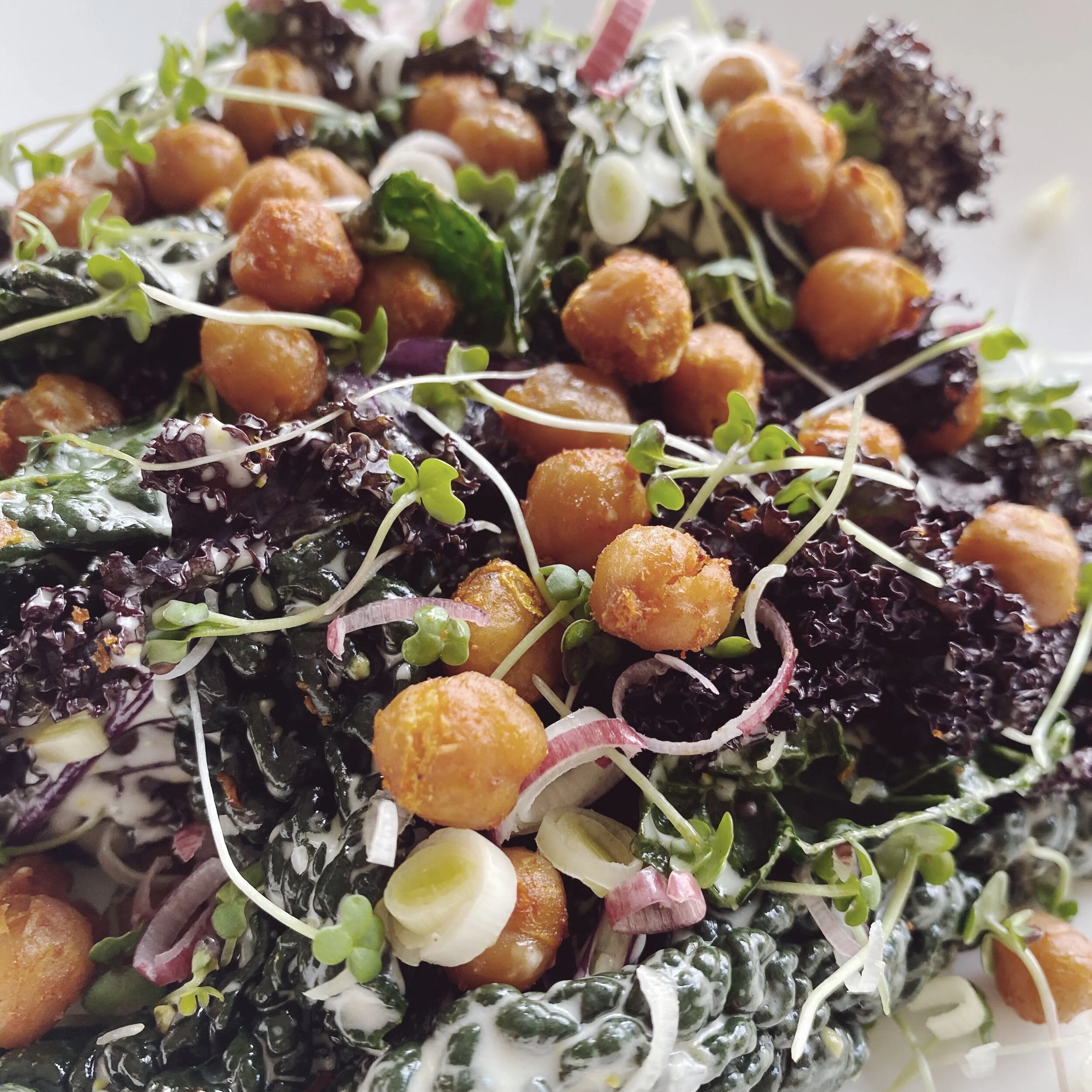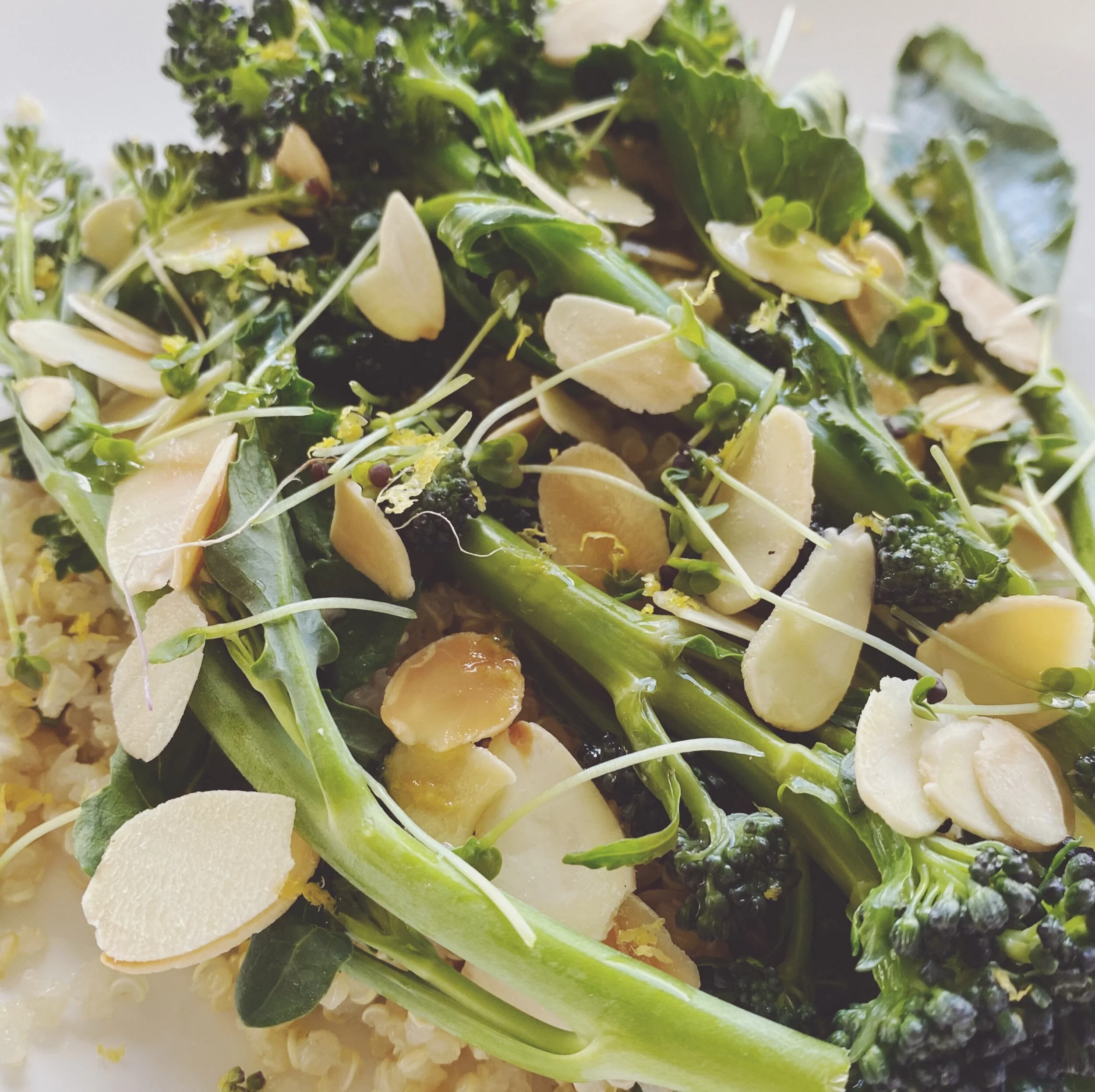Spring into Salads
Vegetable blooms
as we move from soups to salads.
As we move from winter to spring, from frost to blooms, from darkness to light, our bodies crave different foods. While we may be a while away from crisp summer salads, melons and pineapple, with the spring weather, there are so many delectable salad delights that are crisp and fresh as we transition from soup to salad.
In some cultures, salads are used at a stage in a meal to aid in digestion. In some parts of Switzerland, salads are consumed at the beginning of a meal to refresh the palette. In many Mediterranean countries, salads are eaten at the end of a meal to aid in digestion. Many of the ingredients in the dressings aid at both the beginning and end of a meal as well as the salad ingredients themselves. In Greece apparently a dip is considered a spreadable salad, so a beautiful friend tells me.
Salads can be more than a side to a meal, they can be a meal in itself. Not every salad is the same. Soggy salads, wet and moppy mush is hardly a salad, you need something to bite on, chew on. So with this in mind here are some tips for creating a cracking salad.:
Texture ~ is important in a salad. Add texture with fresh vegetables, nuts and seeds. Crunch is important for mouth texture and bite. Mouthfeel is something to think about so try to balance your ingredients with a mix between raw and cooked, wet and dry, moist and dry.
Soggy ~ avoid soggy salads by dressing them too far ahead of time or by overdressing.
Protein ~ what makes a salad a meal rather than a side, is protein. Vegetables do contain proteins, so do meats, dairy, beans, tofu, nuts, and seeds. A good mix of protein not only adds to the salad to make it a meal, but it also adds flavour and texture.
Food waste ~ In thinking about salad creation a great way to think about food waste is to consider using the whole vegetable. A nose to tail approach. Many parts of a vegetable that you would not consider, can be used. A cauliflower heart and beetroot tops for example.
Dressing ~ Don’t just drizzle it on top and hope for the best or soak the salad in a bowl. Use a mixing bowl and add salad dressing and mix and coat the salad. Add the dressing bit by bit until the salad gets a good coating. Sometimes it’s good to add a topping that is not dressed. This ensures the crunch is maintained.
Balance - sweet salty sour and umami. The balance can be achieved with the ingredients themselves or the dressing can balance out the ingredients and vice versa. This also counts for seasoning, if your ingredients are salty adjust the seasoning and seasoning in the dressing.
Top ~ Just like a good soup topping is key, a good salad topping is no different. Add crunch texture and flavour and tie everything in together.
Micro herbs ~ There are so many varieties now produced they also add nutrients.
Vego ~ If you are vegan or vegetarian or trying to eat less meat swap it out and experiment.
Bright greens ~ to keep your greens or other veggies bright once they have been steamed/boiled submerge them immediately in iced water, it will stop the cooking process and lock in the colour. Either that or a pinch of bi-carb soda in the boiling water.
Finally shop your fridge and pantry, before you grab a recipe and go hunting at the shops, you might surprise yourself.
There is more to a salad than iceberg lettuce and salad is not only for rabbits. Make it a meal, make it interesting, and think outside the box. Here are four salads to start the creative salad juices flowing.
Words By
Anita La Forgia
Multipotentialite, lifestyle elevator and initiator of Levata
A treechanger who cooks to elevate life. Anita is passionate foodie using local, quality and seasonal ingredients. Living in the Macedon Ranges in Victoria she frequents the local farmers markets each week, with her beloved luggy. Her grandparents instilled the life skills of sustainable living, before sustainable living was a buzz word. She grew up in a restaurant and completing her International degree at César Ritz colleges in Switzerland, the heart land of hospitality, food and service.
Image source: Levata





